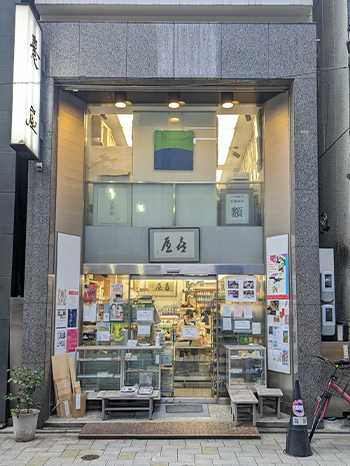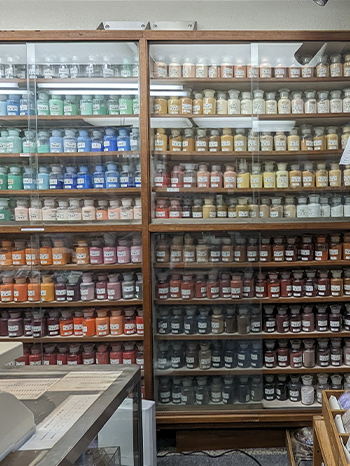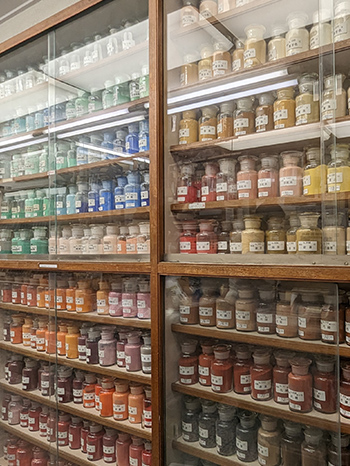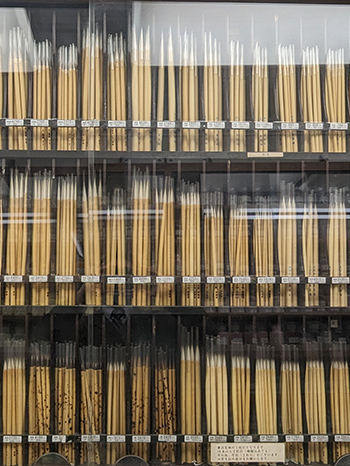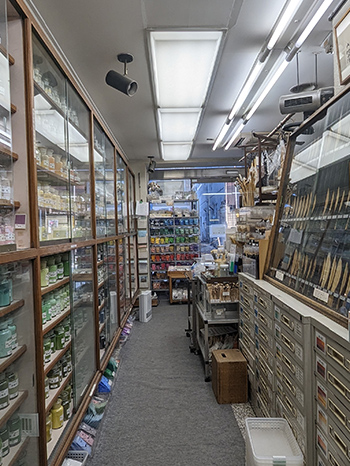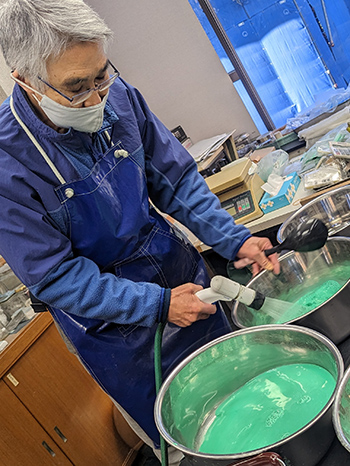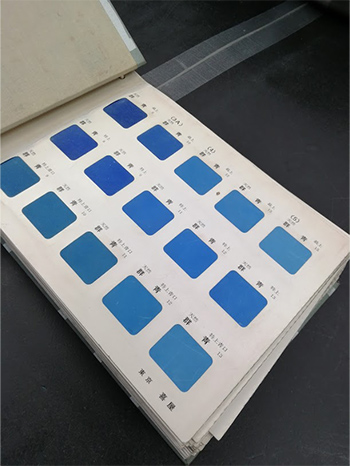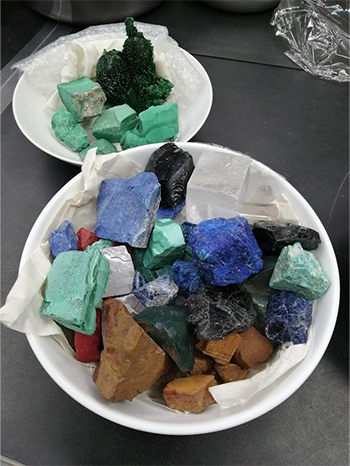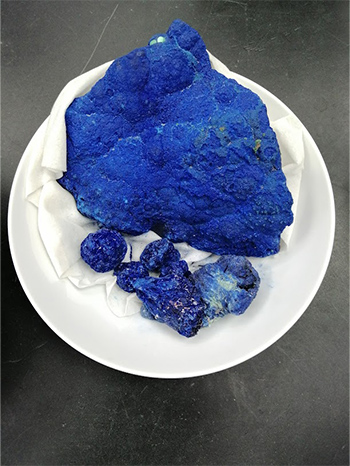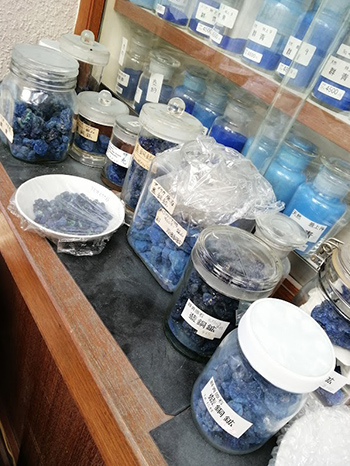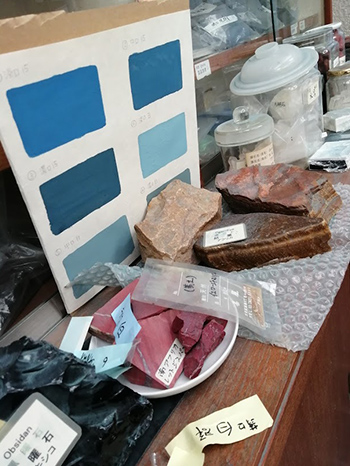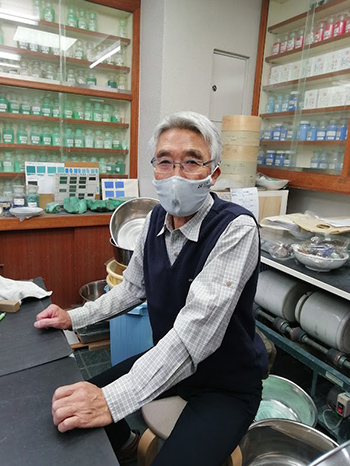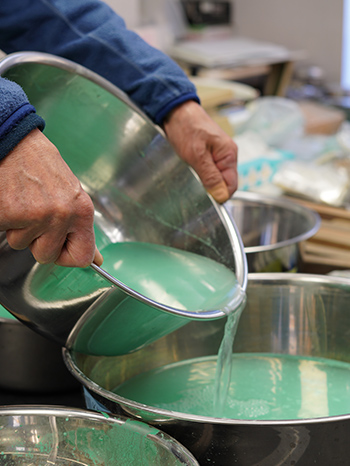Sustainable Japanese painting techniques
Natural Paints

Japanese painting materials Kiya (Tokyo)
Information
The joy of drawing with the “real thing.”
A Tokyo specialty store that has been selling Japanese art supplies and ink painting materials since the early Taisho era,
we stock thousands of colors of paint, including our own natural mineral pigments.

Nakagawa chalk paint (Kyoto)
Information
Preserving unique traditional art materials in the present day
Nakagawa Gofun Paint is one of the few long-established manufacturers of Japanese painting paints in Japan. For about half a century since 1897, the company has developed as a manufacturer of mineral pigments for Japanese painting, making use of the techniques and traditions it has cultivated in the manufacture of gofun.
It is an essential presence in Japanese culture and Japanese painting, including the development and popularization of Japanese painting and the preservation and restoration of historical buildings.
NATURAL JAPANESE PAPER

Yame Handmade Mizota Washi Paper
Information
Making washi paper that protects the world's cultural assets.
Toshikazu Mizota, who has been making washi paper for over 15 years, is spreading the word about the wonderfulness of Yame handmade washi paper both in Japan and overseas, in order to preserve the tradition. Yame handmade washi paper is highly valued for restoration in art galleries and museums around the world, including Europe, and in Fukuoka Prefecture, it is used to restore the "Soke documents" held at the Kyushu National Museum and books at the Fukuoka Prefectural Library.

Chikuzen Akizuki Japanese paper shop
Information
The only Japanese paper workshop still standing in Akizuki.
Akizuki washi paper, which was encouraged by the eighth feudal lord Kuroda Nagatsune in Akizuki, the Little Kyoto of Chikuzen, is known for its strength and elegance, and became one of the three major products of the Kuroda domain, along with kudzu and river mushrooms.
There used to be over a dozen papermaking businesses here, but now there's only one, and even today, they carefully make each sheet of paper using the beautiful water that flows from Mt. Kosho.
This is a workshop where you can observe and experience papermaking using traditional methods. The craftsmen will teach you carefully about papermaking and its raw materials. The shop also serves as a place where you can purchase beautiful washi paper and works made from washi paper.
NATURAL JAPANESE BRUSH

Heisuke Fude Fukkodo Co., Ltd. [Fukuoka]
Information
The oldest brush specialty store in Japan.
Heisuke Brush Fukkodo was founded in 1501 during the late Muromachi period by Kawarada Gorobei, a brush maker of "Tsukushi brushes" that were produced in Hakata.
All of the "Heisuke brushes" we sell are handmade by artisans, and we have handed down the techniques of "Heisuke brushes" to brush craftsmen in Hiroshima and Kyoto, which are known for their brush production, so we continue to make brushes in the same way as in the past.

Yamamoto Bunpodo Co., Ltd. [Fukuoka]
Information
An art supply store that supports Fukuoka's creative community
When it comes to art supplies in Fukuoka, Yamamoto Bunpodo has all the supplies you need for art.
You can get oil paints, acrylics, watercolors, pastels, and even Japanese art supplies at Yamamoto Bunpodo.
Staff with specialized knowledge of Japanese art supplies will be happy to answer any questions you may have.
They also carry many original art supplies such as brushes and panels, and are popular with local Japanese painters.
JAPANESE INK

Kobaien Co., Ltd. [Nara]
Information
Preserving Japan's unique Japanese ink in modern times
Founded in 1577, Kobaien's ink, which is also mentioned in the poetry of Natsume Soseki, continues to be made by artisans today, inheriting the traditional Japanese ink of the past.
Lamp soot ink, which is refined from oil soot, was first made in Nara. The ink, which is handmade one by one over a long period of time, is not just black, but is said to have the flavor of seven colors within it.
